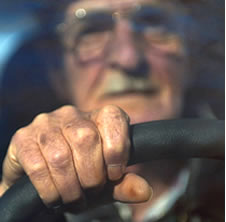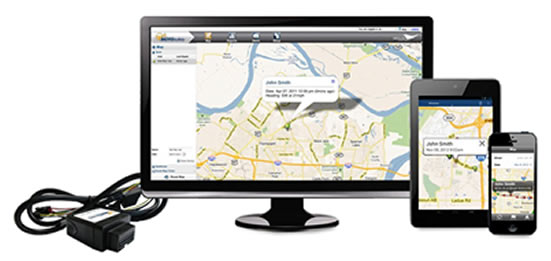Driving Safely with Dementia and Knowing When to Quit
WATCH SEGMENT ON KFOR-TV

Having Alzheimer's disease means you will eventually have to stop driving - the question is when. While most doctors agree that people with moderate to severe Alzheimer's should not take the wheel, in the early stages, the medical consensus is that driving performance should be the determining factor of when to stop driving, not the disease itself.
With that said, it's also important to realize that as driving skills deteriorate over time, a person with Alzheimer's may not be aware of their worsening problems and may be unable to realistically assess their abilities. So, it's very important that caregivers work closely with their loved one and their loved one's doctor to monitor their driving and protect their safety. Here are some tips and tools that can help.
Warning Signs
The best way to keep tabs on your loved one's driving ability is to take frequent rides with them watching out for key warning signs. For example: Does he have trouble remembering routes to familiar places? Does he drive at inappropriate speeds, tailgate or drift between lanes? Does he react slowly or make poor driving decisions? Also, has your loved one had any fender benders or tickets lately, or have you noticed any dents or scrapes on his vehicle? These, too, are red flags.
If you need some assessment help, hire a driver rehabilitation specialist who's trained to evaluate older drivers. To locate a specialist see driver-ed.org or aota.org/older-driver.
Transition Tips
Through your assessments, if you believe it's still safe for your loved one to drive, you may want to start recommending some simple adjustments to ensure their safety, like driving only in daylight and on familiar routes, and avoiding busy roads and bad weather. Also, see if your loved one will sign an Alzheimer's "driving contract" (see alz.org/driving to print one) that designates someone to tell him or her when it's no longer safe to drive.

In addition, you should also consider getting a GPS vehicle tracking system for their car (like motosafety.com) to help you keep an eye on them. These devices will let you track exactly where they're driving, and allow you to set up zones and speed limits that will notify you via email or text message when they exit an area or arrive at a designated location, and if they are driving too fast.
Time to Quit
When your loved ones driving gets to the point that he can no longer drive safely, you'll need to talk to them. It's actually best to start having these conversations in the early stages of the disease, before they needs to quit driving, so they can prepare themself.

You also need to have a plan for alternative transportation (including a list of family, friends and local transportation services) that will help them get around after they stop driving.
For tips on how to talk to your loved one, the Hartford Financial Services Group and MIT AgeLab offers a variety of resources at safedrivingforalifetime.com - click on "Dementia and Driving."
Refuses To Quit
If your loved one refuses to quit you have several options. First, suggest a visit to their doctor who can give them a medical evaluation, and "prescribe" that they stop driving. Older people will often listen to their doctor before they will listen to their own family.
If they still refuse, contact the Oklahoma Department of Public Safety to see if they can help.
If all these fail, consider hiding their keys or just take them away. You could also disable his vehicle, park it in another location so they can't see it or have access to it, or sell it.








